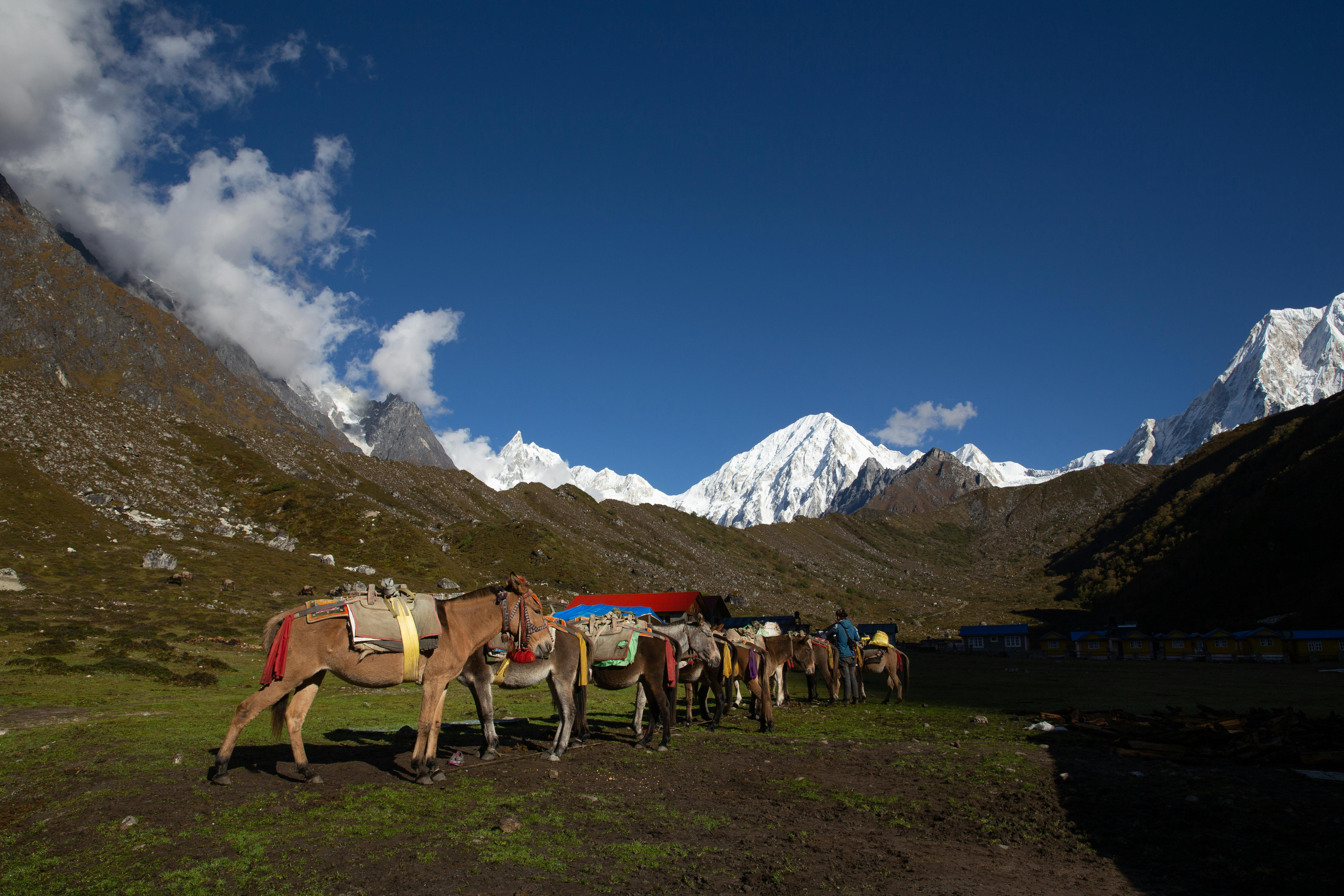Selecting the right season for your trekking or mountaineering adventure is crucial to ensure safety, comfort, and an optimal experience. Whether you're scaling the towering peaks of the Himalayas, trekking in the remote regions of Bhutan, or attempting high-altitude expeditions in Tibet and Pakistan, understanding the seasonal conditions can make all the difference. Here's a detailed guide to help you plan your trek or expedition to the most iconic peaks in Nepal, Tibet, Pakistan, and Bhutan:
Spring (March to May) – Ideal for 8000m, 7000m, and 6000m Expeditions & Trekking
- Pros:
- Weather: Spring brings mild temperatures, clear skies, and excellent visibility, making it one of the best seasons for trekking and mountaineering in the Himalayas.
- Expeditions: For 8,000 m and 7,000 m peaks (e.g., Everest, Lhotse, and Makalu), the conditions are optimal, with stable weather and lower avalanche risks.
- Trekking: In regions like Everest, Annapurna, and Bhutan's Paro Taktsang, the temperatures are moderate, with rhododendron forests blooming along the trails.
- Cons:
- Crowds: As this is a peak trekking season, popular regions like Everest Base Camp and Annapurna may see heavy foot traffic.
- Costs: Flights, permits, and accommodations tend to be higher during this period due to demand.
Where to Go in Spring:
- Nepal: Everest Base Camp Trek, Annapurna Circuit, Langtang Valley, and high-altitude expeditions to peaks like Everest, Lhotse, and Makalu.
- Tibet: Everest North Expedition, Everest North Base Camp, Cho Oyu, Shishapangma.
- Bhutan: Paro Taktsang (Tiger's Nest), Jomolhari Trek.
Autumn (September to November) – Best for 8000m, 7000m, and 6000m Expeditions & Trekking
- Pros:
- Stable Weather: Autumn is another prime season, characterized by crisp, clear skies and stable weather, making it ideal for high-altitude climbs and treks.
- Expeditions: For 8,000m peaks like Manaslu, Dhaulagiri, Annapurna, and Chomolungma, as well as Shishapangma, Autumn offers stable conditions for summit attempts. 7,000 m peaks like Himlung and Baruntse are also best attempted in this season.
- Trekking: Clear skies and moderate temperatures provide the perfect trekking conditions in Nepal, Bhutan, and Tibet.
- Cons:
- Crowds: Although slightly quieter than spring, popular trekking regions still see some crowds, especially on trails like EBC and Annapurna.
Where to Go in Autumn:
- Nepal: The best season for trekking to Everest, Annapurna, and Manaslu circuits and expeditions to peaks like Manaslu, Makalu, and Dhaulagiri.
- Tibet: Everest North Base Camp, Shishapangma, and Cho Oyu.
- Pakistan: K2 Base Camp, Broad Peak, Nanga Parbat, and the Karakoram peaks.
- Bhutan: Druk Path Trek, Jomolhari Trek, and other cultural treks.
Winter (December to February) – Great for High-altitude Trekking and Expeditions
- Pros:
- Quiet Trails: This is the off-season, so you'll experience quieter trails and base camps, especially in remote regions.
- Clear Views: The air is crisp and clear, providing stunning, unobstructed views of the snow-capped peaks.
- Cons:
- Cold Temperatures: Temperatures at high altitudes can drop to freezing levels, with conditions becoming harsh and demanding, especially for trekkers.
- Harsh Conditions: High-altitude routes can be closed due to snow accumulation. Avalanches are more common, and trekking or climbing becomes physically more challenging.
Where to Go in Winter:
- Nepal: Lower-altitude treks, such as Ghorepani Poon Hill, Langtang Valley, and Mardi Himal, are accessible. Expeditions to lower 6,000 m peaks, such as Island Peak or Mera Peak, are possible, but higher mountains like Everest or Manaslu should be avoided due to extreme cold and snow.
- Tibet: Everest North Base Camp and Lhasa Cultural Trek, as well as Cho Oyu, remain accessible, but may experience severe weather conditions.
- Pakistan: The winter season is generally not recommended for high-altitude climbs; however, lower-altitude climbs in the Karakoram region may be possible with careful planning.
- Bhutan: Trekking at lower elevations, such as the Punakha or Paro Valley treks, remains feasible, although high-altitude treks like Jomolhari will be challenging due to snow and cold.
Summer/Monsoon (June to August) – Suitable for Lower Elevations and Off-the-beaten-path Treks
- Pros:
- Lush Landscapes: The monsoon season brings heavy rainfall, which transforms the landscapes into vibrant green areas, with rivers and waterfalls at their fullest. It's an excellent time for nature photography.
- Fewer Crowds: Trails are quieter, especially in regions outside the Everest and Annapurna circuits, offering a more secluded experience.
- Cons:
- Heavy Rainfall: The monsoon brings heavy rain, which can cause trail erosion, landslides, and limited visibility due to cloud cover. This season is not ideal for high-altitude expeditions, as the conditions are dangerous due to snowmelt and avalanche risks.
- Leeches and Bugs: Trekking at lower altitudes can lead to discomfort from leeches and other insects.
Where to Go in Summer/Monsoon:
- Nepal: Short treks at lower altitudes like Ghorepani Poonhill, Jomsom, and lower Mustang. Trekking routes such as the Annapurna Circuit and Langtang Valley are best avoided during the monsoon season.
- Tibet: Summer is the only time when some areas of Tibet become accessible, but it's not the ideal time for Everest North Base Camp or other high-altitude climbs.
- Pakistan: Low-altitude trekking and cultural tours in the Hunza Valley or Skardu can be explored during the monsoon season.
- Bhutan: Lower-altitude treks like the Bumthang Valley trek or Punakha can be an option during this season.
Conclusion:
Each season in the Himalayas, whether you're trekking or aiming for high-altitude summits, offers unique advantages and challenges. Spring and Autumn are generally the best times for trekking and expeditions, with mild temperatures, clear skies, and optimal conditions for summiting high mountains. However, Winter and Monsoon bring their own set of challenges and opportunities, especially for trekkers seeking quieter trails and unique landscapes.
For any trek or expedition, be sure to check the specific conditions of the route you plan to take and consult with your expedition leader or company (like Altitude Experts Trips & Expeditions) for detailed advice on seasonal conditions and preparation.



